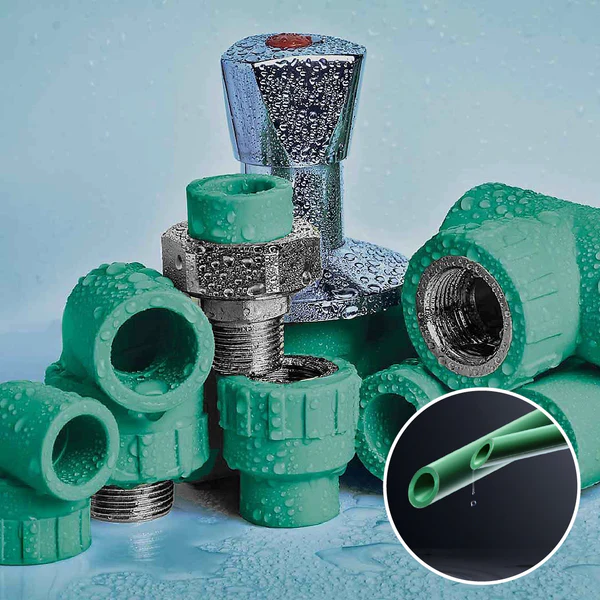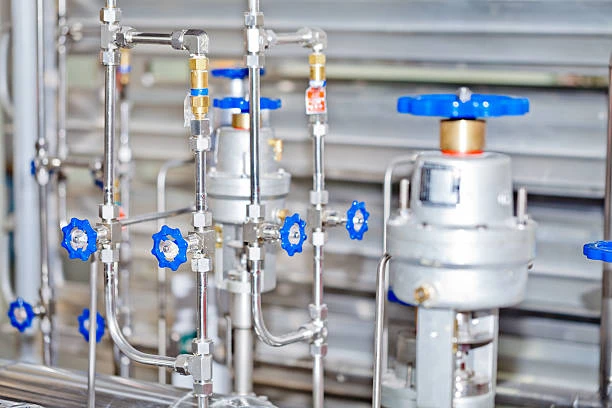The cartridge valve market is poised for significant growth in the coming years, driven by advancements in technology and increasing demand across various industries. This article delves into the trends shaping the cartridge valve market from 2024 to 2031, examining key factors, applications, and future projections. As a vital component in hydraulic and fluid control systems, understanding the dynamics of cartridge valves is essential for industry stakeholders.
What Is a Cartridge Valve?
Definition and Function
A cartridge valve is a type of valve designed to control the flow of fluid within a hydraulic system. Unlike traditional valves, which are often bulky and complex, cartridge valves are compact and consist of a cartridge that can be easily installed and replaced. They play a crucial role in regulating pressure and flow, making them essential in various applications, from industrial machinery to automotive systems.
Types of Cartridge Valves
- Pressure Control Valves: These valves regulate system pressure to prevent overpressure situations. Examples include relief valves and pressure reducing valves.
- Flow Control Valves: These valves manage the rate of fluid flow within a system, ensuring optimal performance.
- Directional Control Valves: These valves direct the flow of fluid to different paths within a hydraulic system, controlling the movement of actuators and cylinders.

Market Overview
Current Market Landscape
As of 2023, the cartridge valve market has witnessed steady growth, fueled by increasing automation in industries such as manufacturing, construction, and agriculture. The shift towards more efficient fluid control systems has made cartridge valves a preferred choice due to their ease of use and reliability.
Market Size and Projections
The global cartridge valve market is expected to grow at a compound annual growth rate (CAGR) of approximately 6.5% from 2024 to 2031. This growth is attributed to several factors, including technological advancements, increasing investments in infrastructure, and a rising demand for energy-efficient solutions.
Key Trends Influencing the Cartridge Valve Market
1. Technological Advancements
The cartridge valve market is being transformed by rapid technological innovations. Key trends include:
- Smart Valves: The integration of IoT technology in cartridge valves allows for real-time monitoring and control, improving efficiency and reducing downtime.
- Advanced Materials: The development of new materials that enhance durability and resistance to harsh environments is expanding the applications of cartridge valves.
2. Increasing Automation
The growing trend towards automation in industries such as manufacturing, agriculture, and construction is driving demand for cartridge valves. As companies seek to improve efficiency and reduce operational costs, the need for reliable and compact fluid control solutions has surged.
3. Sustainability Focus
With an increasing emphasis on sustainability, industries are looking for ways to minimize waste and improve energy efficiency. Cartridge valves, known for their precise control and reduced leakage, are well-positioned to meet these demands.
4. Expansion in Emerging Markets
Emerging economies are investing heavily in infrastructure development, which is boosting the demand for hydraulic systems and, consequently, cartridge valves. Countries in Asia-Pacific, Latin America, and Africa are seeing significant growth in this sector.
5. Customization and Flexibility
Manufacturers are increasingly offering customizable cartridge valve solutions to meet specific industry needs. This trend allows for greater flexibility and efficiency in fluid control applications, catering to diverse customer requirements.
Key Applications of Cartridge Valves
1. Industrial Machinery
Cartridge valves are extensively useful in industrial machinery to control hydraulic systems, ensuring efficient operation. Their compact design makes them ideal for applications where space is limited.
2. Agricultural Equipment
In the agriculture sector, cartridge valves are useful in tractors and other machinery to control fluid flow and pressure, enhancing the efficiency of agricultural operations.
3. Automotive Applications
The automotive industry employs cartridge valves in various systems, including braking, steering, and transmission, to improve performance and safety.
4. Construction Equipment
Heavy construction machinery relies on cartridge valves for fluid control, ensuring optimal operation in demanding environments.
5. Oil and Gas Industry
Cartridge valves are critical in oil and gas applications, where they are useful for pressure control and flow regulation in exploration and extraction processes.
Competitive Landscape
Major Players in the Cartridge Valve Market
The cartridge valve market features several key players that dominate the landscape:
- Parker Hannifin Corporation: Known for its extensive range of hydraulic components, Parker Hannifin offers innovative cartridge valve solutions.
- Bosch Rexroth AG: A global leader in drive and control technologies, Bosch Rexroth provides a wide variety of cartridge valves for various applications.
- Eaton Corporation: Eaton is recognized for its advanced fluid power solutions, including a comprehensive line of cartridge valves.
- HydraForce: Specializing in hydraulic cartridge valves, HydraForce is popular for its commitment to innovation and customer satisfaction.
Market Strategies
To maintain a competitive edge, key players are focusing on:
- Research and Development: Investing in R&D to develop innovative products that meet changing industry needs.
- Strategic Partnerships: Collaborating with other companies to expand product offerings and improve market reach.
- Sustainability Initiatives: Implementing sustainable practices in manufacturing and product development to meet consumer demands for eco-friendly solutions.
Challenges in the Cartridge Valve Market
1. High Competition
The cartridge valve market is highly competitive, with numerous players vying for market share. This competition can lead to price wars, affecting profit margins.
2. Economic Factors
Fluctuations in the global economy can impact the demand for cartridge valves, particularly in industries heavily reliant on hydraulic systems.
3. Regulatory Challenges
Compliance with environmental and safety regulations can pose challenges for manufacturers, necessitating ongoing investment in product development and testing.
Future Outlook
Market Growth Opportunities
The cartridge valve market is important to experience robust growth in the coming years, driven by:
- Innovation: Continued advancements in technology and materials will lead to more efficient and reliable valve solutions.
- Expansion into New Markets: As emerging economies continue to develop, the demand for cartridge valves in new applications will rise.
Conclusion
The cartridge valve market is set for significant growth from 2024 to 2031, influenced by technological advancements, increasing automation, and a focus on sustainability. As industries continue to evolve, the demand for reliable and efficient fluid control solutions will only increase. For manufacturers and stakeholders, staying abreast of market trends and embracing innovation will be key to success in this dynamic landscape.
FAQs
1. What is a cartridge valve?
A cartridge valve is a compact valve useful to control the flow and pressure of fluids in hydraulic systems, consisting of a replaceable cartridge for easy installation and maintenance.
2. What are the main types of cartridge valves?
The main types include pressure control valves, flow control valves, and directional control valves, each serving different functions in fluid management.
3. What industries utilize cartridge valves?
Cartridge valves are widely usfuld in industrial machinery, agricultural equipment, automotive applications, construction equipment, and the oil and gas industry.
4. What are the current trends in the cartridge valve market?
Key trends include technological advancements, increased automation, sustainability focus, expansion in emerging markets, and customization of products.
5. Who are the major players in the cartridge valve market?
Major players include Parker Hannifin Corporation, Bosch Rexroth AG, Eaton Corporation, and HydraForce, all known for their innovative valve solution.


















